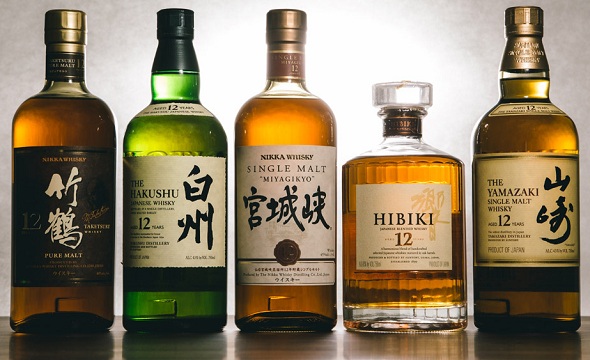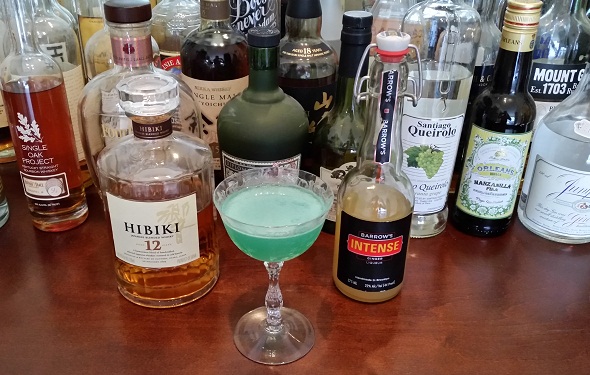When Cocktail Enthusiast sent me a bottle of Hakushu 12, a Japanese whisky produced by beverage giant Suntory, back in 2012, my attention was captured. Two years and many drams later, my interest has grown into an obsession, all too appropriate for the subject matter. You see, at the time Japanese whisky had been ferreting its way into Western cocktail culture, popping up among the more diverse backbars and curated cocktail lists in metropolitan areas. Since then Japanese whiskies have seen a marked rise in Western demand; while tough to quantify as DISCUS does not include Japanese whisky as a standalone category in its yearly reports, we’ve seen a frenzy of regular consumers asking and talking about it. For American purposes, it’s akin to the recent, insatiable demand for rye whiskey, with rolling shortages to match.
When I put Yamazaki 12 on a cocktail list back in December 2013, the cocktail outsold all but our on-tap vodka cocktail. We were selling the stuff literally by the case, and subsequently depleted the rest of the city’s allocation. I was getting hounded by other bar managers who couldn’t get product, and it wasn’t until May that I finally started seeing it in stock again. So why did that happen?
It boiled down to this: it was a curiosity. Americans wanted to drink Japanese. I think there’s no more salient point in the growth of the category than January news headlines that rocked my world: “Japan’s Suntory to Acquire Beam Inc.” That’s right. For those of you who love spirits but also have been living under a large rock, as of May 1st, Jim Fucking Beam has now cozied up under a Japanese umbrella. After the predictably xenophobic trolling died down, we were left with the indelible realization that Japanese whisky is officially mainstream in the Western world. Which means now’s the time to become well-versed in the category.
And I’m here to help. Over the next few weeks we’ll take a closer look at three venerable whisky houses — Suntory, Nikka, and Chichibu (progeny of the Hanyu distillery in more ways than one), and the lost distilleries of Karuizawa and Mars. Where better to begin than with the one that started it all. Join me in coming weeks as we dive into Suntory’s whiskies and history. A bottle of Hibiki 12 and tasting glass are strongly encouraged. I know I’ll have mine.
Until then, a cocktail for all my thirsty friends out there. It incorporates the short drink format of 4:1:1 used by Kazuo Uyeda in his Tender series, his way of commemorating the anniversary of his renowned Tokyo cocktail haven. It’s a wonderful basic ratio for those who prefer that their citrus and sweeteners play a supporting role to their spirit. His uncanny fondness for blue curacao in his recipes piqued my interest. It’s up there among butterscotch schnapps and banana liqueur on the list of Things Your Craft Bartender Doesn’t Want You to Know About.
Naturally, I didn’t have a bottle handy, so I sucked it up and made the walk of shame from the shelf to the checkout counter with a bottle, and I have to say, I’m glad I did. Its content of unnecessary blue coloring is granted, but this orange, curacao and lemon distillate’s aesthetic effect on the guest is undeniable, something Uyeda places as paramount in all his choices behind the bar. In suspending my reservations, I felt an illicit pleasure, and a breath closer to understanding his status as philosopher king of Eastern liquid culture. Check the recipe below.
Eden Hall
2 oz Hibiki 12 Year whisky
.5 oz lemon juice
.5 oz ginger liqueur
1 barspoon (roughly .167 oz) blue curacao
Combine all ingredients in a Boston shaker and hard shake. Double strain into a cocktail glass and enjoy.
If you like, prepare the cocktail glass with Uyeda-san’s signature coral rim. First dunk the glass upside down in a glass of blue curacao or other deeply hued liquid. Then dunk into a glass full of sugar and allow to rest for a moment. Remove the glass and dust off any sugar from the inside.
top photo: gear patrol




